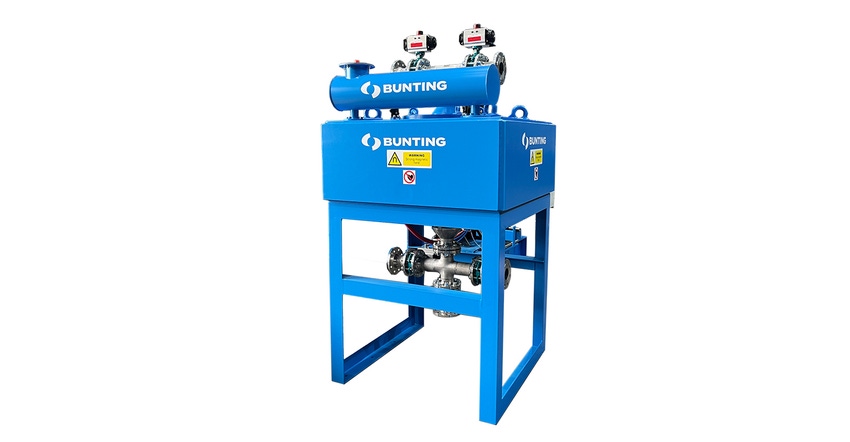Successful removal of fine magnetics reduces finished product rejects, increases surface brightness.
November 28, 2022

A leading German ceramic manufacturer is cleaning ceramic glaze with a high-intensity electromagnetic filter designed and manufactured by Bunting. The successful removal of fine magnetics reduces finished product rejects and increases surface brightness.
High-Intensity Elector Magnetic Filters
The electromagnetic filter provides an effective method of removing problematic fine iron and paramagnetic minerals from ceramic slips and glazes. The separation efficiency of the technology is better than permanent magnetic separators such as liquid pipeline separators and tube magnet configurations.
Electromagnetic filters consist of an electromagnetic coil positioned around a central hollow core containing a magnetic (400 series) stainless steel matrix of various designs. The highly efficient computer designed coil generates a high-intensity magnetic field that intensifies on the points of the matrix creating the magnetic force needed to separate paramagnetic particles from the slurry. The rectangular steel casing enclosing the magnetic coil intensifies the magnetic field into the hollow center of the coil. Valves, mounted on the top and bottom of the electromagnetic filter, close and open in a controlled timed sequence for product feed and discharge, as well as matrix cleaning using water and air.
In operation, ceramic glaze or slip feeds up through central canister packed with magnetic stainless steel matrix. The magnetic field of the electromagnetic filter intensifies on the sharp points of the matrix, enabling the capture of fine magnetic particles such as free iron and magnetic minerals.
Project Details
This ceramics project in Germany required a large model HIF225-50 electromagnetic filter, which generates a background magnetic field of approximately 6,500 gauss inside the central canister. The points of the matrix enhance the background magnetic field by up to four-times, with the 6,500 gauss models generating peak fields above 2-Tesla.
In Operation
The ceramic glaze feeds up through the electromagnetic filter for a period of approximately 60 minutes. On an automatic operation cycle--managed by a separate control panel--the valves system then stops the feed, diverting the glaze back into the feed tank, while the system goes through a cleaning cycle This involves discharging the captured magnetics from the canister and cleaning of the matrix, which lasts for approximately two minutes. The control enables adjustment of the sequence times to suit the processing of a variety of ceramic glazes. In this project, the HIF225-50 handles between 3-5 tn/hr of glaze with 64% solids.
“If fine iron and magnetic minerals are not removed from ceramic glaze, they cause surface defects and discoloration,” explained Phil Tree, Bunting’s European sales manager. “In this project, we are working with one of the world’s leading ceramics manufacturers. They understand the necessity and benefits of automatically removing all magnetics, which is only possible with an electromagnetic filter.”
For more information, visit www.bunting-redditch.com.
About the Author(s)
You May Also Like



